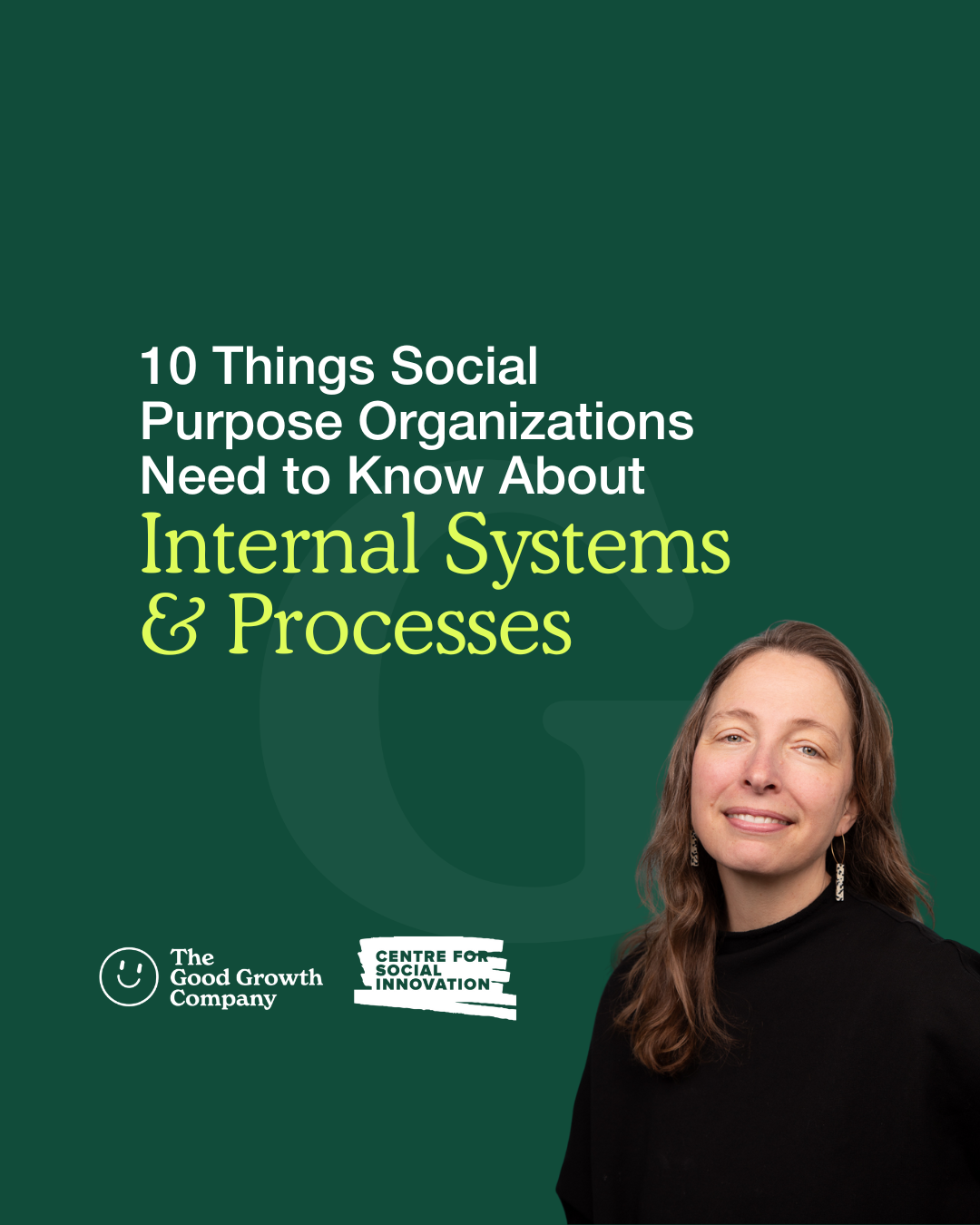How Better Processes Can Help Your Social Purpose Organization Thrive
10 Things Social Purpose Organizations Need to Know About Internal Systems & Processes
When it comes to nonprofit growth, mission matters—but so do systems. In this session of the 10 Things series, we welcomed Carrie Ferrence, founder of The Big Lil and experienced fractional COO, to guide us through the foundational systems and processes that help social purpose organizations grow without burning out their teams.
Drawing from her deep experience supporting nonprofits and social enterprises through growth and change, Carrie shared practical tools and strategic insights for creating internal infrastructure that truly supports your mission. Whether you’re in the midst of scaling, navigating complexity, or just trying to run a smoother operation, this session delivered the clarity nonprofit leaders need to build sustainable, aligned organizations.
Top Takeaways
1. Project management is the foundation
Too many teams operate in chaos. The antidote? Clear, shared project management systems. Carrie emphasized the importance of investing in tools like Asana, Basecamp, or Monday.com—but more importantly, in ensuring that the entire team uses them consistently. “Your team needs to see you using and honoring that system as much as you expect them to,” she said.
2. Break down your goals into strategies and actions
A strategic plan isn’t useful if it lives in a drawer. Translate your goals into actionable strategies and clear work plans. Goals are the big picture, strategies are the how, and actions are the day-to-day steps.
3. Job descriptions aren’t enough
Don’t assume that a job description provides clarity. Each team member should understand their work from daily to annual timelines—and how it connects to the broader mission. Clarity is not micromanagement. It’s leadership.
4. Compliance matters more than ever
Whether it’s government requirements, grant deliverables, or contracts, compliance is no longer a back-office issue. One misstep—like mishandling a hire—can jeopardize an entire organization. Get outside help where needed.
5. Budgets tell a story
Every cell in a budget reflects the story of money in and money out. Organizations should move beyond dividing annual numbers by 12 and start building scenario-based budgets that reflect reality. Carrie recommends building this muscle, even if you're just starting out.
6. Cultivate your stakeholders year-round
It’s not just about fundraising asks and thank-you notes. A stakeholder map can help you plan regular, meaningful engagement across all key groups—donors, volunteers, partners, and beyond.
7. Your whole team should contribute to cultivation
Don’t silo relationship-building. Everyone—from the bookkeeper to the program manager—can play a role in stakeholder engagement. This creates stronger culture and deeper external relationships.
8. Mission ≠ culture
Having a great mission doesn’t mean you have a healthy culture. “You could have the best mission, but if your internal culture is eroding, you won’t be able to scale,” Carrie said. Invest in psychological safety, communication norms, and intentional connection.
9. Invest in your bookkeeper
Don’t skimp on this. A good bookkeeper is more than just a transaction tracker—they’re a partner in understanding and managing the financial health of your organization.
10. Leaders, you're doing too much
This was a clear theme: most executive directors and nonprofit leaders are stretched thin. Carrie’s advice? Start saying no. Reallocate work. Stop doing it all. Sustainable leadership starts with setting realistic boundaries and redistributing responsibilities.
Audience Q&A Highlights
How do you get a small team to adopt project management systems?
Carrie stressed that consistency and modeling are key. If leaders aren’t using the system themselves, the team won’t either. Integrate it into your team check-ins and planning. "The only way through is through."
What are the risks of using AI tools for operations?
Be cautious. Carrie shared examples of organizations dropping sensitive data into unvetted AI tools. Use AI for support, not strategy. "AI doesn’t replace thinking—it supports it," she said.
Thoughts on Salesforce or CRMs for donor management?
Carrie often finds Salesforce too complex for small nonprofits. “It’s not a Salesforce problem, it’s a relationship-building problem,” she noted. Focus on cultivating stakeholders first, then build your tool around that strategy.
How do you balance flexibility with structure?
Carrie emphasized the importance of culture over policy. Don’t over-build systems you don’t need yet. “Let systems break a little before you fix them. Build trust first.”
What if you’re introducing new processes or systems?
Change doesn’t happen at the end—it happens in all the steps between. Model the behavior you want to see, communicate clearly, and make space for your team to let go of the old way of doing things.
When should you reassess a process?
Ask yourself: Have we really given this a chance? Have we modeled it, trained the team, and integrated it into our routines? If the answer is yes, and it's still not working—then it may be time to pivot.
Recommended Resources
The Big Lil – Carrie’s consulting firm offering fractional COOs for nonprofits and social enterprises
Project management tools Carrie mentioned: Asana, Basecamp, Monday.com
Scenario-based budgeting templates and stakeholder mapping tools (available to members)
Final Thoughts
This session was a powerful reminder that operations are not just back-end logistics—they’re the scaffolding that holds up your mission. As Carrie said, “You can’t scale chaos. Get your internal systems right first.”
Whether you’re just starting to build internal infrastructure or looking to level up your existing operations, these insights offer a roadmap for sustainable growth and better team engagement.
Want to watch the full session?
Get access to this and all past sessions in the Good Growth Company Membership
See what’s coming up next in the 10 Things Series
Visit thegoodgrowth.company/journal/10things-series to register for future events.

